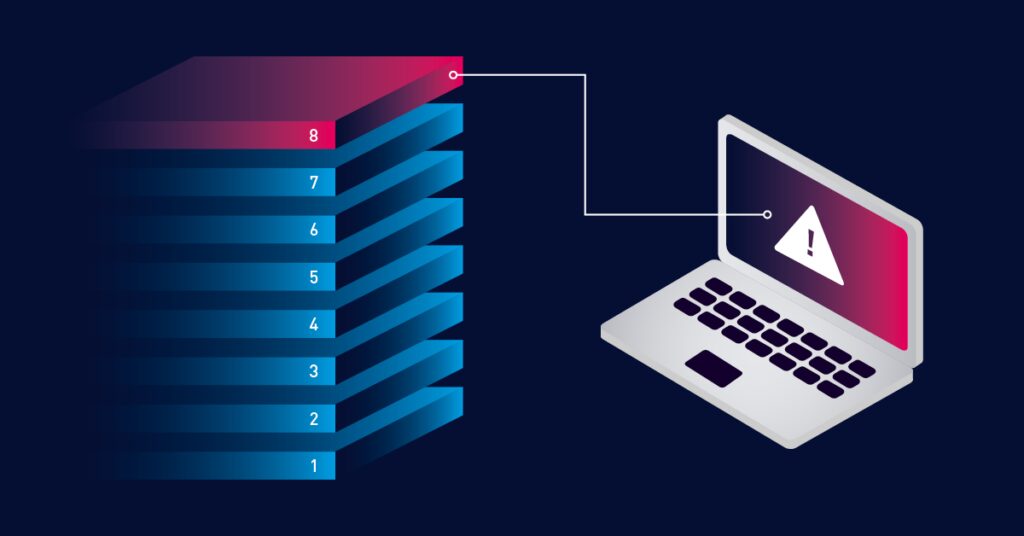Network protocols and data transmission play a vital role today in enabling seamless digital communication. Behind what we see, the thing that governs all of these processes and procedures is a complex framework called the OSI model. Understanding this model is essential for network admins and basically, anyone who is interested in modern communication systems.
The main purpose of this article is the exact thing; unveiling the OSI model and helping you understand network protocols. By explaining all the layers of the OSI model, we aim to provide you with valuable insights and uncover this masterpiece framework. Whether you’re a beginner or a seasoned professional looking to strengthen your learning, this article will serve as a guide in understanding the intricate workings of the OSI model, and how it allows for smooth communication between networks and users.
Overview of the OSI Model
Let’s start with a solid foundation on this very complex system, as it will be the key to understanding how networks work and how the Open Systems Interconnection (OSI) model enables communication between them. To define it with a single sentence, the OSI model is a comprehensive framework that standardizes the functions and processes used in network communications.
This model consists of seven distinct layers, and each of these has its own roles, responsibilities, and functions to make communication happen. It is this hierarchical structure that makes network communication efficient and interoperable. You can find out what are these layers below, but we will be explaining them in detail in the upcoming section:
- Physical Layer
- Data Link Layer
- Network Layer
- Transport Layer
- Session Layer
- Presentation Layer
- Application Layer
By working together and meeting their responsibilities, the protocols that lie in the OSI model layers enable smooth, efficient, and speedy data transmission. Now let’s jump into how they work and what they do in the real world.
Layer-by-Layer Breakdown

Source: blog.paessler.com
Layer 1: Physical Layer
The Physical Layer is the first layer of this hierarchy and forms the foundation of the OSI model. It is responsible for the physical transmission of data over the network, meaning that it is responsible for the hardware and other physical aspects of communication. At this layer, data is represented as a stream of bits and transferred through physical objects such as copper wires, fiber-optic cables, or wireless signals.
Protocols within this layer are Ethernet and Wi-Fi. Ethernet defines how data is transferred on wired communications whereas Wi-Fi governs wireless communication. In addition to these protocols, connectors, and signaling methods decide how reliable the communication is.
The application of this layer in real life can involve factors such as how far a signal can reach before getting disrupted, or how we can use repeaters to extend the streams of data. Think about the Wi-Fi repeaters you use in your home which are used to extend the communication between the router and the user.
Layer 2: Data Link Layer
The Data Link Layer handles the transmission of data frames between nodes, such as network interface cards. The main responsibilities of this layer are framing, error detection and correction, flow control, and media access control.
Ethernet is also included in the protocols of this layer, which defines the standards of LAN communications. Ethernet encapsulates packages of data, provides the intended destination, and checks for errors. Another protocol used at this layer is Point-to-Point Protocol (PPP), which allows two nodes to communicate directly.
The Data Link Layer also utilizes MAC addresses to identify network devices. Switches use MAC to forward frames within a LAN connection and to determine which devices are connected to ports.
Real-world use of this model includes selecting the appropriate media access control method, such as Carrier Sense Multiple Access with Collision Detection (CSMA/CD) for Ethernet, and using a flow control mechanism to regulate data transmission between devices.
Layer 3: Network Layer

Source: securityintelligence.com
The Network Layer is where the logical addressing and routing of data packets are handled. This layer routes the data considering factors such as network congestion and routing protocols. After evaluating these factors, Network Layer decides the optimal way for the data packet to be sent through.
The Internet Protocol (IP) is the prominent protocol on this layer. IP assigns unique IP addresses which are identifiers for every device on the Internet. It breaks data into small packets and defines the source and the recipient destination IP address, which routers use to transmit data.
The real-life use case of this layer includes subnetting, network addressing schemes, and implementing routing protocols to provide efficient and smooth packet delivery across the networks.
Layer 4: Transport Layer
The Transport Layer is responsible for end-to-end data delivery between applications. This layer breaks data into segments and adds information to facilitate error detection, sequencing, and reassembly.
The dominant protocols on this layer are Transmission Control Protocol (TCP) and the User Datagram Protocol (UDP). TCP uses processes such as acknowledgment, retransmission of lost segments, and flow control in order to ensure smooth delivery of data. UDP, however, allows a connectionless transmission method in real-time applications where speed is a priority instead of reliability.
Layer 5: Session Layer
The Session Layer is where tasks like establishing, managing, and terminating communication sessions are done. As the name suggests, its primary function is to establish communication sessions, coordinate data exchange and end the session on time.
Session management protocols enable authorization, authentication, and session checkpointing to ensure a smooth communication channel. They also manage session recovery if for some reason the session end unexpectedly. Thanks to these protocols and in the Session Layer, network hosts can initiate ongoing interactions and the applications can resume operations after a disruption.
Layer 6: Presentation Layer

Source: youtube.com
The Presentation Layer handles the formatting and the presentation of data packets, and ensures that the communication is understandable between applications. In order to make this happen, Presentation Layer handles data representation, encryption, and compression.
At this layer, data is transformed into an understandable format for the recipient, compressed to minimize transmission bandwidth, and encrypted to secure communication. Lastly, it initiates data formatting and conversion to ensure interoperability.
Layer 7: Application Layer
The Application layer is the very top layer of the OSI model hierarchy. It is the closest to the end-user as it provides the means for users to access network resources and use applications. It uses various protocols that are designed to facilitate the use of applications for the user.
These protocols include HTTP for web browsing, FTP for file transfer, SMTP for everyday mail communication, and DNS for domain name resolution. All these protocols work closely to provide a seamless experience for the user in accessing websites, transferring files on the Internet, and sending emails. Understanding the functions of this protocol is essential for both developers and end-users as it helps them understand the protocols governing their interactions.



